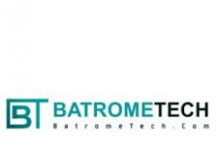
Personal computers are becoming very common and popular in the society and almost every average Nigerian family can boast of one. We use the personal computers for our daily browsing; watching of videos, doing of assignments, playing of games among many other functions but not every one of us can fully describe or understand the various parts of a computer.
It is very imperative and essential for every one of us to know the various names, parts and functions of the computer as it will help us to know how the whole system function and identify cause of any type of malfunction if any should occur.
Definition Of A Computer
Before we begin, we need to know the definition of a computer. A computer can be defined as a device that can be programmed to process some sequences of logical or algebraic operations automatically through a computer programming.
The present day computers have the ability to process programs via a process known as programming. They are not as heavy as computers were in time past and are more affordable.
A Brief History Of The Computer
The first computer ever made was the abacus, and then followed by the slide rule in 1622 by William Oughtred. However the first computer to look like the today’s modern computers was the Analytical Engine. It was conceived and designed by a British mathematician, by Charles Babbage and it was between 1833 and 1871.
Before then, the first digital computer was invented by Blaise Pascal in the year 1642.
Parts Of A Computer
It is a very easy task to memorize the different parts of a computer, but where the main issue lies in understanding the individual functions of the various parts.
- The computer case: This is an enclosure that holds all the components of the computer like the wires together. It can be compared to the skeletal system of the living organisms in the sense that is forms a frame for others to follow. Inside it you’ll see all the things that are needed for the normal functioning of the personal computer and it is also arranged in a secured way to prevent falling apart of the components and also encouraging ventilation.
- The motherboard: This is also referred to as the ‘main board’ or ‘mobo’ and it is the backbone of the computer. It helps connect the different computer parts together and also centralize everything using its circuit board. The central CPU, memory, hard drives, graphic processing unit, printers, and other computer ports are all connected to the system via special cables attached to the computer motherboard or directly.
- The central processing unit: This is another important component of the computer. It can also be called ‘the brain’ of the pc. The CPU selects instructions, processes them, performs arithmetic comparisons, and stores the results in the memory.
Many of the computers in the present days make use of more than one central processing unit and this is to enhance the workability and functioning of the system. This is why you’ll see the word ‘dual core’ and ‘quad core’ written on the body of some central processing units, they represent two cpu’s and four cpu’s respectively.
- The power supply: This can be compared to the food we humans eat because it helps the computer function as the food we eat help us function in better ways. It is the energy that we get from the food we eat that help us complete some tasks that we encounter as we move on in our daily life. The power supply is what helps convert the alternating current in the house sockets to direct current which helps power the computer. It is what helps the other parts to like the CPU, monitor, screen, usb cords to function properly.
- Hard drives: Have you ever wondered where all your saved files are? Your photos, videos, text files, music files and all the rest of them. Then the answer is here…the hard drive. It is a permanent memory of the computer and doesn’t get erased when the computer is shut down.
- Memory: This is also known as the Random Access Memory. The difference between the Random Access memory (RAM) and the hard drive is that the RAM determines the speed of the computer while the hare drive is for storing files. The higher RAM you should use depends on what you intend using you system for. My system is a Windows 8 pc with 2 gigs RAM and it serves me well because I only use it for blogging. However, if you play a lot of games or you are someone that uses a lot of software, then you’ll probably need a system with a higher RAM.
- Optical drives: This is just a kind of fancy word for the DVD or CD drive. This helps us read data from discs and also it can be removed. Some of the discs are copy able, while some are not; this depends on the disk and not the drive.
- GPU/Graphic Cards/Video Cards: This is the secret behind the beautiful graphics you see in the computer screens. It is equivalent to how tow the human eyes function and forms the graphics for us.




